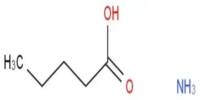Water isn’t merely an all-purpose solvent that doesn’t change as a result of its interactions. According to recent studies from North Carolina State University, water can alter its solubility properties based on its environment.
In particular, water can stack in stratified shells when it interacts with cellulose to regulate chemical processes and the material’s physical characteristics. The research has implications for designing cellulose-based goods in a way that is more efficient and sustainable.
“Cellulose is the world’s most abundant biopolymer, and it’s used in applications that range from bandages to electronics,” says Lucian Lucia, professor of forest biomaterials and chemistry at NC State and corresponding author of a new study in Matter. “But cellulose processing has been mostly done by trial and error, and some of it utilizes incredibly harsh chemicals. To find better ways to process cellulose, we need to understand its most fundamental interactions for example, with water.”
To do so, he worked with colleague Jim Martin, professor of chemistry at NC State, who studies the fundamental properties of water as a solvent.
“Water has the uncanny ability to change characteristics depending on what it’s with, which gives it wide range of solubility characteristics,” Martin says. Martin is the author of an opinion piece in Matter that is a companion to Lucia’s study.
The water forms shells around the fibers that can stack, like a nesting Russian doll. The fewer shells, or layers, the harder the fibers. But when you add more layers, the connection between fibers grows farther away and the material becomes softer.
Professor Jim Martin
“We change the nature of water by what we dissolve in it, and by the concentrations of those solutes in water,” Martin says. “Think of the continuum between Kool-Aid and hard candy. You start with sugar. In Kool-Aid the sugar is completely dissolved. As you remove the water, you get taffy, then hard candy, then back to crystalline sugar.”
“We know that water is critical to how cellulose is laid down,” Lucia says. “So in this study we probed how it orients itself and plays a reactive role in mitigating or leveraging chemistry.”
The scientists physically altered various kinds of wood fibers and observed how water interacted with other molecules and itself inside the resulting structures. They discovered that at lower water concentrations, bridge structures within the material lead to a loss of flexibility due to the water distribution and ensuing molecular interactions between the water and the fibers.
In fact, they discovered that the cellulose network allows water to ‘hide’ itself while generating potent hydrogen connections. The tightness or looseness of the bridging structures is in turn determined by this bonding.
“The water forms shells around the fibers that can stack, like a nesting Russian doll,” Martin says. “The fewer shells, or layers, the harder the fibers. But when you add more layers, the connection between fibers grows farther away and the material becomes softer.”
Future work by the group intends to investigate the various bonds that water can form within these frameworks.
“Studying these interactions at the molecular level paves the way toward manipulating water in cellulose to design better products and processes,” Lucian says. “Understanding what is happening from fundamental principles lets us design approaches that take advantage of water’s properties for everything from drug delivery to designing electronics.”
The research paper, “Computational and experimental insights into the molecular architecture of water-cellulose networks,” and the editorial piece, “Water under the influence of solutes: on the non-innocence of a universal solvent,” both appear in Matter.
















